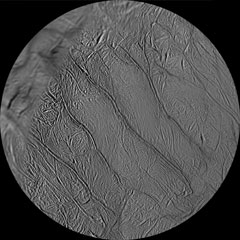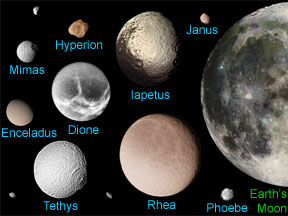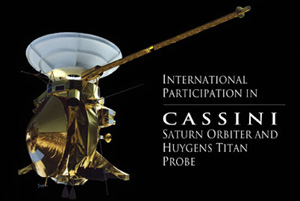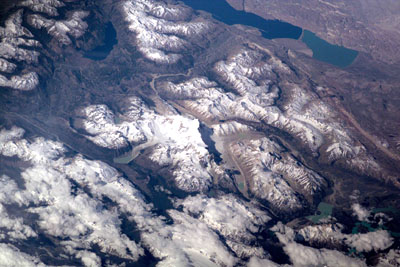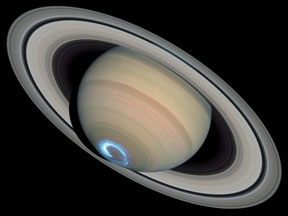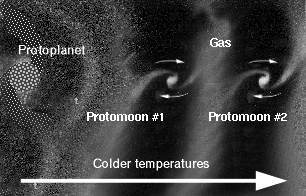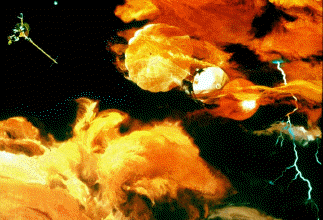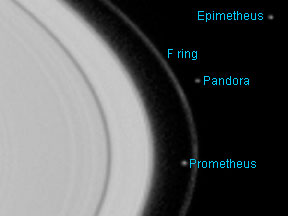Click on image for full size
Image courtesy of DLR and NASA/JPL/Cassini Imaging Team.
The South Pole of Enceladus
Enceladus is a medium-sized, icy moon of Saturn. The South Pole of Enceladus is one of the oddest places in the Solar System. Temperatures near the pole are far warmer than anywhere else on the moon, huge cracks criss-cross the region, and geysers spew ice crystals hundreds of kilometers into the sky.
Several huge gouges, averaging 130 km long by 2 km wide and 500 meters deep, run across the region of Enceladus's southern pole. These giant cracks have been nicknamed "tiger stripes". Scientists can tell, by counting meteorite craters, that this region around the South Pole is geologically younger than the rest of the moon's surface. They have also discovered that the South Pole is by far the warmest place on the moon, especially near the tiger stripes. This cannot be the case if Enceladus is heated by sunlight alone. The young surface, enormous "tiger stripe" cracks, and high temperatures all indicate that Enceladus (or at least the area around its South Pole) is geologically active.
The Cassini spacecraft discovered direct evidence of this geologic activity - it captured images of ice geysers erupting from the southern polar region of Enceladus! This moon of Saturn is one of only four bodies in our Solar System on which we have observed eruptions (the three others being Jupiter's volcanic moon Io, Neptune's moon Triton, and of course Earth). Scientists aren't quite sure yet how the ice geysers on Enceladus work, nor are they certain what supplies the heat to drive them. Perhaps there are subsurface reservoirs or aquifers of liquid water on Enceladus; this possibility piques the interest of astrobiologists. In any case, the ice geysers are an area of active research.
Scientists have spotted multiple plumes of ice from geysers, possibly emanating from more than one of the tiger stripe cracks. The ice crystals are flung hundreds of kilometers above Enceladus's surface; some even leave the moon altogether, contributing material to one of Saturn's rings. Ice that falls back to the moon's surface coats it with a bright layer akin to newfallen snow, making Enceladus the most reflective (highest albedo) body in the Solar System. The bright surface reflects away sunlight, keeping the moon cold; the average temperature on Enceladus is a chilly -200° C (-328° F).


